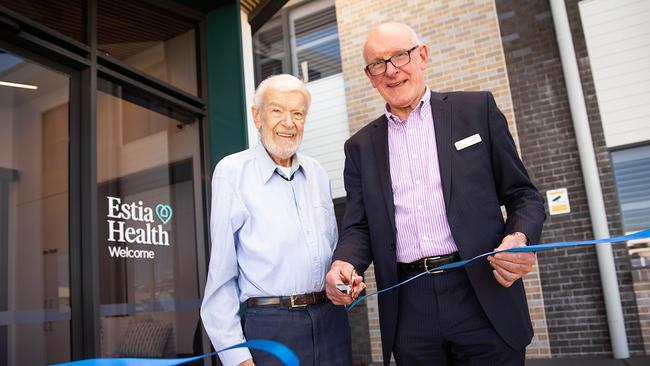Nursing home group Estia confirms toll of Victoria’s second COVID-19 wave
Estia has blamed Victoria’s second coronavirus outbreak for infecting 11 of its homes, killing 36 residents, while sending others to hospital.

Listed nursing home provider Estia has blamed Victoria’s second coronavirus outbreak for infecting 11 of its homes, killing 36 residents, while sending others to hospital.
On the day the Victorian government announced there were no more COVID-19 cases in the state’s aged-care sector, Estia confirmed Victoria’s second coronavirus had spiralled out of control with tragic consequences.
Chief executive Ian Thorley said the nursing home provider had managed to effectively control the spread of COVID-19 at the onset of the pandemic through measures such as staff quarantine leave, which it introduced in March.
The group’s infection control procedures to protect residents against coronavirus appeared to have worked — initially at least.
“By June the incidence of COVID-19 in the community was minimal and while restrictions had relaxed we continued to assess the measures we had put in place,” Mr Thorley said at the company’s annual meeting on Thursday.
“As we now know, COVID-19 came back with great speed.
“Eleven of our homes experienced outbreaks and notwithstanding the fact that we adopted the same rapid response plan at each (home), the COVID-19 outbreaks in Ardeer, Keilor, Keysborough and Heidelberg West homes resulted in the deaths of 36 residents. This caused a great sense of loss and sadness for residents, their families and our employees.”
By last July, so severe were the COVID-19 outbreaks across Estia’s homes, that the company risked having its commonwealth funding revoked after it was served a “notice to agree” from the Aged Care Quality and Safety Commission.
The source of Victoria’s second wave — the state’s hotel quarantine program — is the subject of an inquiry, which last week had its final reporting date extended until December after the emergence of critical new evidence and delays in receiving Health Department documents.
Despite Victoria’s nursing homes being free of coronavirus, Mr Thorley said the threat of the highly contagious virus remained.
“COVID-19 will remain a challenge for the foreseeable future. We have committed additional infection prevention and control resources into our permanent workforce in all of our 69 homes,” he said.
“We have engaged a leading infection prevention control company on a long-term, group-wide contract to provide expert advice on infection control, undertake independent audits of all our homes, provide further specialist infection prevention control education for our employees and be a central resource for the latest advice provided by national bodies and international sources.”
Importantly, he said Estia had learned from its deadly coronavirus outbreaks.
“From our experience in Victoria we have commenced a COVID-19 outbreak simulation program. Our chief quality and risk officer together with Sean Bilton, chief operating officer, who co-ordinated our Victorian response, are working with our home managers and their teams to pressure-test policies and local COVID-19 response plans in a real-time simulated environment.
“COVID-19 has seen us adopt new ways of operating, with new staffing responses, rapid deployment of new technology, almost daily changes to operating systems, all of which demonstrated the capacity of this company to be tested under extreme circumstances.”
Estia has written down the value of its nursing home assets by $144.6m — and confirmed COVID-19 had cost the company $2.5m in the year to June 30, which was mainly spent on personal protective equipment and staffing.
But COVID-19 costs have continued to rise in the first quarter of this financial year, totalling $6m and comprising $4.4m in Victoria and $1.6m in other states. Mr Thorley said most of these costs were incurred in managing the outbreaks in metropolitan Melbourne at the height of the second wave in the group’s homes at Ardeer, Heidelberg West, Keysborough and Keilor Downs.
He said Estia had also continued to incur costs associated with additional resident liaison officers and infection prevention control supervision and training at all homes.
Overall revenue in the three months ending September 30 was $159m, with Victoria contributing just under a third.
“Revenues were impacted by the decline in occupancy experienced in Victoria. In addition, the group took the decision to cease resident billings at a number of homes during COVID-19 outbreaks in Victoria, and ceased additional services billings at all homes in Victoria for three months as a result of limitations on the ability to deliver those services during the statewide lockdown,” Mr Thorley said.




To join the conversation, please log in. Don't have an account? Register
Join the conversation, you are commenting as Logout